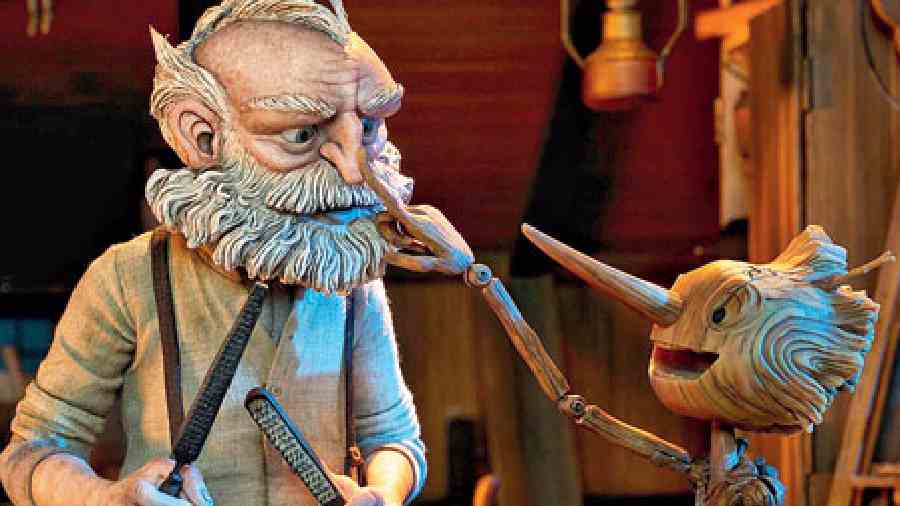In today’s cinema, Guillermo del Toro’s name being attached to any project is enough for it to elicit a large amount of curiosity and interest. So when the Mexican film-maker announced that he would be attempting a stop-motion version of Pinocchio, now notably known as Guillermo del Toro’s Pinocchio, one knew that there would be more to it than just an upgrade of what has always been known to be a children’s story.
Now streaming on Netflix, Pinocchio — that del Toro has co-directed with Mark Gustafson — the saga of the carpenter Geppetto and the puppet named Pinocchio that comes alive — is a dark, musical take on the classic tale in which del Toro makes a powerful comment on Fascism, even as he packs in emotional family messages.
The animation is painstakingly created, the stop-motion figures are exquisitely detailed and the new take carries a surprising amount of weight for this oft-told story. There is a sense of immediacy about both the theme and treatment of this version of Pinocchio, and along with Pinocchio, the audience also learns that time and mortality are fleeting.
The melodies are both mellifluous and melancholy, and in true del Toro tradition, also delightfully bizarre, and like the auteur’s previous works — most significantly Pan’s Labyrinth and The Shape of Water — Pinocchio transports us to a space of both wonder and horror.
This is clearly an upgrade that isn’t just for kids, and while a large part of the treatment is bleak, younger audiences will be drawn to the film because of its striking cinematography and state-of-the-art animation.
But at three minutes short of two hours, Guillermo del Toro’s Pinocchio is overlong, and begins to feel cluttered and unwieldy after a point. But del Toro’s inimitable style overrides the film’s negatives and gives us a topical and layered version of Carlo Collodi’s 19th-century picaresque that has often been mistaken for just a fable meant for kids.










